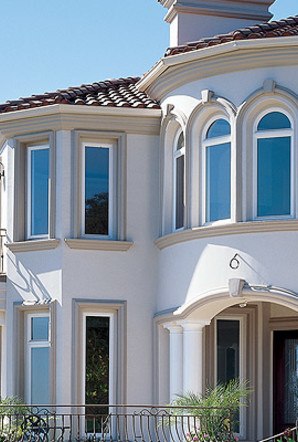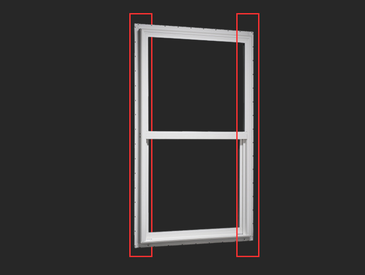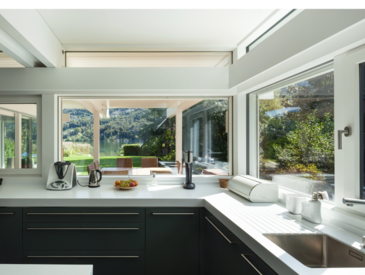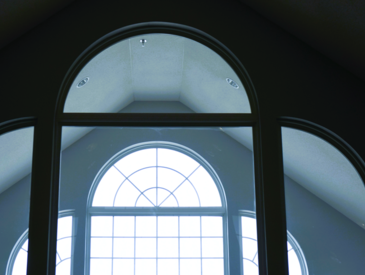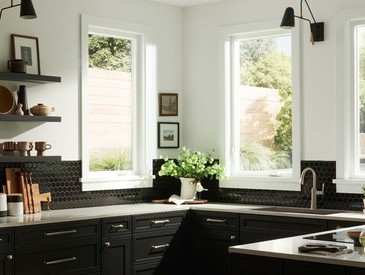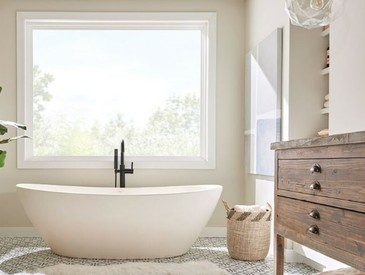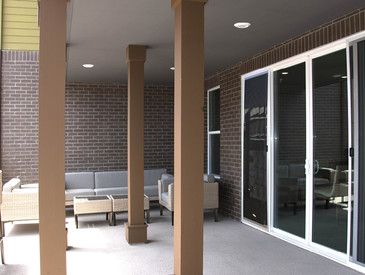When you're replacing a door, getting the size right is crucial. The last thing you want is to order a door that doesn’t fit, leaving you stuck with delays and extra costs. Knowing the standard door sizes and how to measure correctly can save you time, money, and frustration. So let’s dive in.
What is the standard door size?
A standard door size refers to the common dimensions used for most residential doors. While “standard” door sizes vary based on the type of door, builders often follow specific guidelines and measurement ratios so that doors will meet building codes and fit within pre-existing frames.
For example, interior doors often follow a U.S. standard door size that’s based on building codes. Exterior doors are a different standard size because they’re larger and thicker to provide better insulation and security. Understanding what “standard” means in terms of door sizing can help you avoid the need for custom doors, which can be more expensive and difficult to install.
Why do we need standard door sizes?
Standard door size charts and guidelines are important because they streamline the manufacturing process, making it easier to find a door that fits without needing custom orders. These sizes developed over time based on typical building practices and human dimensions, so they guarantee that people can move from room to room and easily access the outdoors.
Types of doors and their standard sizes
Different types of doors have their own standard sizes based on their function and location in the home. Here’s a breakdown of the most common types and their typical dimensions. (We’ll give the standard door size in inches, which is the most common practice. To get the standard door size in feet, just divide by 12.)
Interior Doors
Interior doors are typically used for bedrooms, bathrooms, closets, and other rooms inside the home. The standard height for most interior doors is 80 inches, but the width can vary depending on the space. Common widths for interior doors include 24, 28, 30, 32, and 36 inches. The standard thickness for interior doors is 1 3/8 inches, which is thinner than exterior doors because they don’t need as much insulation or security.
Standard door sizes for interior doors are important so that people can exit a room in case of an emergency. For example, building codes guide both the window size and the standard door size for a bedroom.
Exterior Doors
Exterior doors are designed for entry points, like the front door or back door. Standard door sizes for the exterior are therefore typically larger than interior doors. The standard door size for front doors is 36 inches wide and 80 inches tall, though some homes may have doors that are 32 or 34 inches wide. In homes with tall ceilings or modern designs, exterior doors can be as tall as 96 inches.
Exterior doors are typically 1 3/4 inches thick to provide extra durability and insulation against the elements. These doors often come pre-hung in frames with weatherstripping to seal out drafts and moisture, so check if you need a standard door size with a frame included or not.
Sliding Glass Patio Doors
Sliding glass doors are popular for patios and backyards because they offer large openings with plenty of natural light. Their standard door size is 80 inches tall, but the width can vary. The most common widths are 60 inches, 72 inches, and 96 inches. Double sliding doors, which have two panels, typically have wider openings.
Sliding doors are thinner than standard doors, with an average thickness of 1 inch to 1 1/4 inches. If you're replacing a sliding glass door, make sure you measure the track as well as the door size.
French Doors
French doors are known for their elegant, double-door design and are often used for patios or interior spaces that open up to large living areas. The standard height for French doors is 80 inches, but they vary in width depending on the design. Standard door widths include 60 inches (two 30-inch doors) or 72 inches (two 36-inch doors). French doors can also be customized to fit larger or smaller openings.
French doors are typically 1 3/4 inches thick, similar to exterior doors, especially when they’re used as patio doors. They’re often made of aluminum or wood and feature glass panels for a stylish, open feel.

Measuring a door for replacement
So is your door a standard door size? You’ll need to measure to find out. To measure a replacement door, you need to know three key dimensions: height, width, and thickness. Plus, each type of door has specific tips to ensure you get the right measurement. Here’s everything you need to know.
Measuring the Height
To measure the height of your door, use a tape measure to check from the top of the door frame to the bottom. For a standard door size, this should be 80 inches, but always measure to confirm, as older homes or custom-built homes or additions might have non-standard sizes. For sliding glass doors, measure from the top of the track to the bottom of the track.
Tip: Measure the height in multiple places, including both sides of the door, to ensure the frame is even. If you notice a significant difference, your frame might need to be leveled before installing a new door.
Measuring the Width
For width, measure across the door from one edge to the other. For swinging doors, measure the width at the top, middle, and bottom, as older doors can sometimes warp over time. If you’re measuring a sliding door, take into account the width of the track if you plan to replace it along with the door. For French doors, measure the width of each door panel individually and then add the two together for the total width.
Tip: If your measurements don’t exactly add up to a standard door size, you may be able to round down slightly. Talk to a professional before you proceed.
Measuring the Thickness
Standard door thickness can vary depending on whether the door is interior or exterior. Use your tape measure to measure the side of the door, from the front face to the back face. The interior standard door size is 1 3/8 inches thick, while exterior doors are 1 3/4 inches thick.
Tip: If you’re replacing a sliding door, make sure to measure both the door panel and the frame thickness to ensure compatibility.
Find standard size patio doors and more
Whether you're upgrading for energy efficiency, security, or style, choosing the right door size is the first step to success. By understanding standard door sizes and measuring correctly, you can save time and prevent costly errors when it’s time to replace your door.
Ultimately, the answer to “What is a standard door size?” can be a gray area. Patio doors from MI Windows and Doors, for example, come in a wide variety of sizes to fit nearly any project. For example, the V3000 series comes in two-, three-, four-, and six-panel configurations, allowing it to reach enormous sizes. And the A3000 sliding door maxes out at a whopping 24 feet wide and 10 feet high.
Ready to explore more patio doors sizes and styles? Find a dealer in your area and start shopping!



















